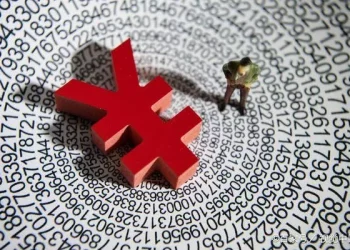As the cryptocurrency market grapples with challenges in attaining widespread recognition within global financial spheres, one prominent figure in the precious metals industry suggests that gold possesses unique attributes that could position it as a favored digital asset.
Randy Smallwood, CEO of Wheaton Precious Metals and Chair of the World Gold Council, emphasized in a recent interview with Kitco News that gold is progressively establishing itself as a global store of value, attracting a fresh generation of investors who have weathered unprecedented uncertainties and market volatility.
Smallwood emphasized that gold derives its value from its inherent rarity, juxtaposing this with the increasingly saturated cryptocurrency sector. While acknowledging the existence of a few leading digital coins, he highlighted the inundation of products in the digital realm, with tens of thousands of digital coins circulating and a substantial number having faced failure in recent years.
Drawing attention to Bitcoin’s subdued performance throughout 2023, Smallwood anticipates that gold could ascend within the digital arena. He indicated that the World Gold Council has noted substantial interest from banks around the world keen on digitizing physical gold.
He commented, “Bitcoin is the promise of something that doesn’t have any backing. There is no real value there.” He further asserted, “The world right now needs a gold-backed digital token that, through the blockchain, represents physical gold and can be freely traded. The world is ready for a digital currency that is backed up by the promise of real value.”
The World Gold Council has been actively contributing to the advancement of gold’s digital infrastructure and fostering potential collaborations through its Gold247 initiative, launched nearly a year ago.
Smallwood underscored analogous sentiments echoed in both the cryptocurrency and broader foreign exchange markets. He noted that central banks are increasingly acquiring substantial volumes of gold, recognizing the necessity to underpin their currencies with more than mere commitments.
Despite the mounting competition aiming to challenge the supremacy of the U.S. dollar as the world’s primary reserve currency, Smallwood acknowledged that nations like Brazil, Russia, India, China, and South Africa—collectively known as the BRICS nations—still have considerable ground to cover to rival the dominance of the greenback.
He emphasized, “There’s a reason the US dollar is the main reference currency here in the world is because it has the strongest gold backing of any currency in the world. And China knows that; that’s one of the reasons China continues to build up gold reserves in its central bank.” He concluded by highlighting the significance of enlightening the younger demographic about gold’s attributes, indicating that a currency aspiring to compete with the U.S. dollar must possess robust gold backing, a concept that necessitates wider understanding among millennials and the youth.

















